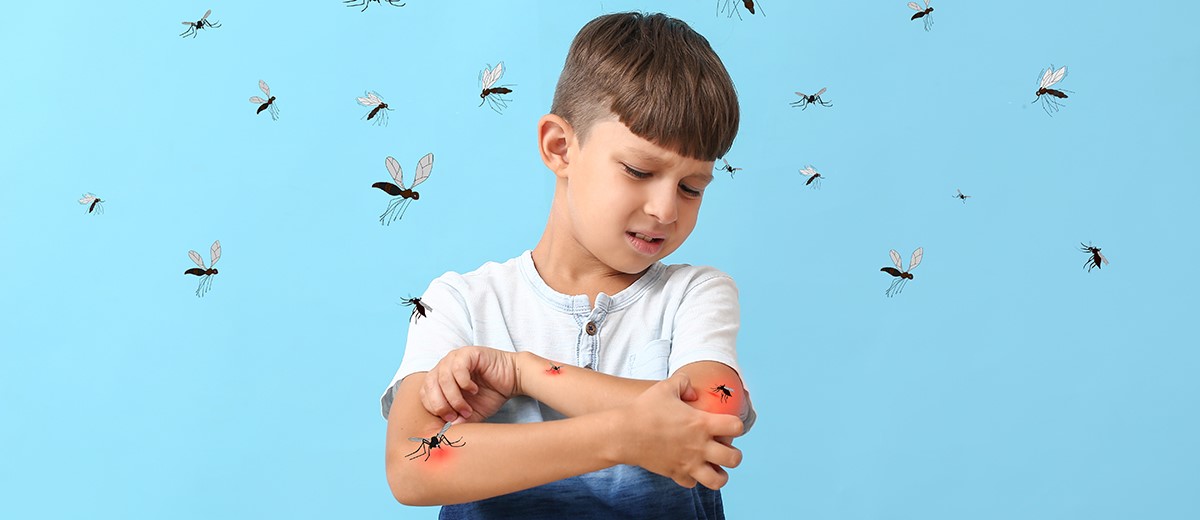As spring turns into summer, more and more kids can be found outside at recess, running around playgrounds, playing in parks, and enjoying field trip adventures and weekend excursions. But it’s not just kids who are out and about more this time of year - it’s bugs and insects, too. While most bug bites and stings are harmless and cause only mild discomfort, others can pose a significant risk and lead to a medical emergency. Therefore, first aid and treatment protocols for bites and stings in the school setting should include those most familiar to the geographic region.
Insect Bites
Most insect bites present as small red bumps, but others can be larger, mimic a hive, or consist of a small-scale water blister. Bites from mosquitoes, chiggers, fleas, and bedbugs are typically red, swollen, and itchy. In contrast, horsefly, deerfly, gnat, ant, blister beetle, and centipede bites usually cause red bumps that are tender and painful. Spider bite symptoms include redness, discomfort, and swelling and are often the cause of single, unexplained bites that occur at nighttime.
Stings
Over 95% of stings are from honey bees or yellow jackets, but bumblebees, fire ants, hornets, and wasps can also sting. Insect stings occur when an insect uses its stinger, a needle-like appendage at the base of its body, to inject venom into surrounding tissue. In the instance of a single sting, if an individual is not allergic to Hymenoptera venom, the risk of severe reaction is exceedingly low. Localized reactions that include pain, swelling, itching, and redness are common, but widespread hives may also occur as an isolated non-anaphylactic reaction or part of an anaphylactic reaction. Only honeybees leave a stinger which should be removed, if possible, by scraping it with a fingernail or credit card. If the stinger is below the skin, it does not need to be removed and will shed naturally.
Treatment
According to the American Academy of Pediatrics, itchy insect bites and stings can be treated with OTC 1% hydrocortisone cream or by application of an ice cube in a wet washcloth for 20 minutes. If the itch is severe, an oral antihistamine may provide relief if available and appropriately authorized. For painful bites and stings, the AAP recommends rubbing the bite for 15 to 20 minutes with a cotton ball soaked in a baking soda solution or applying an ice cube wrapped in a wet washcloth for 20 minutes. OTC pain relief medication may be administered as needed if available and authorized.
It is not uncommon for bites to get infected from frequent scratching. If the area has a scab and appears infected, treatment guidelines include washing the sore, applying an OTC antibiotic ointment, covering the bite with an adhesive bandage, and carefully monitoring for the spread of infection.
The expected course of insect bite reactions is around 5-7 days. Severe pain and burning from a sting typically resolves after 1-2 hours and can then be followed by itching, swelling, and redness, usually lasting 3-5 days. Referral for further evaluation is required for any bite or sting if there is severe pain, spreading infection, or any other symptoms that persist or worsen.
Anaphylaxis
Anaphylactic reactions to insect bites are infrequent, while life-threatening allergic reactions to Hymenoptera stings occur in about 4 out of 1,000 children. The onset of a severe reaction to a bite or sting is generally abrupt, with the first symptoms starting within 20 minutes and always within 2 hours. Schools should follow their emergency protocols for anaphylaxis, including following students’ allergy action plans, administering epinephrine, and initiating an EMS response.
It’s a wonderful time for kids to get outside and play, but that also means they’re prey for insects and bugs who like to bite and sting. Fortunately, most bites and stings are relatively non-urgent and can be treated in the school health office. Through education, preparation, and stocking of appropriate supplies, schools can keep their students safe while enjoying the great outdoors.





